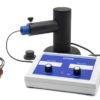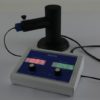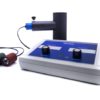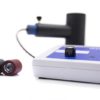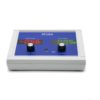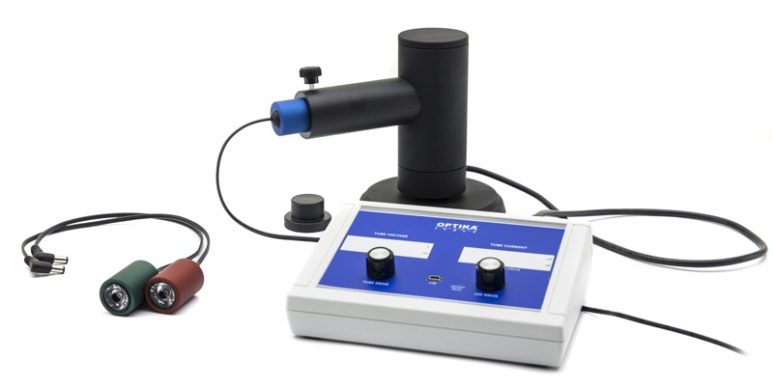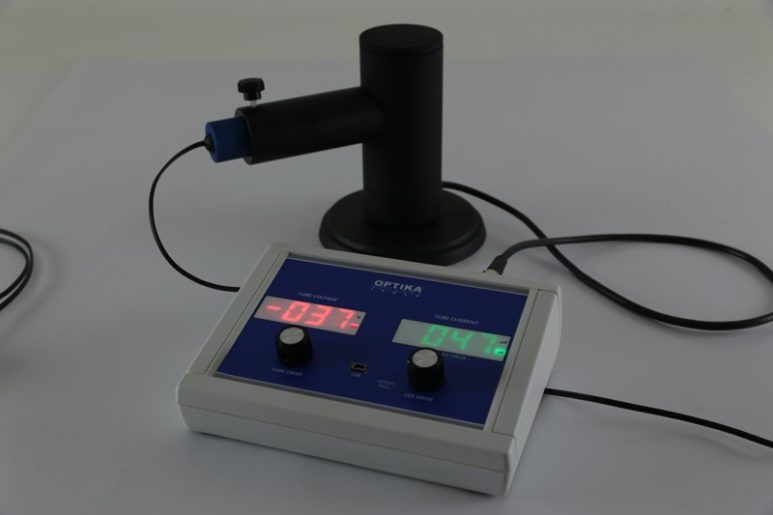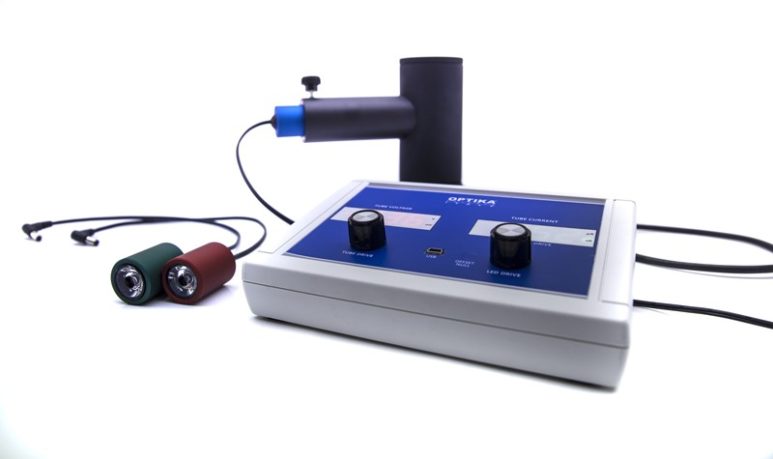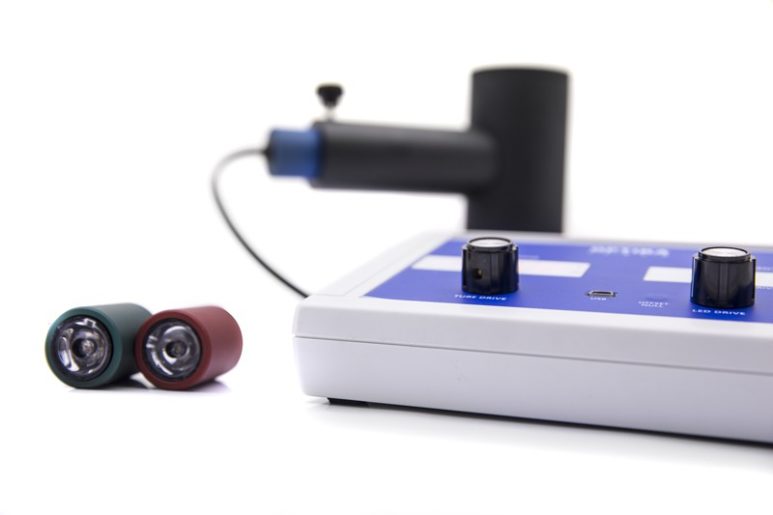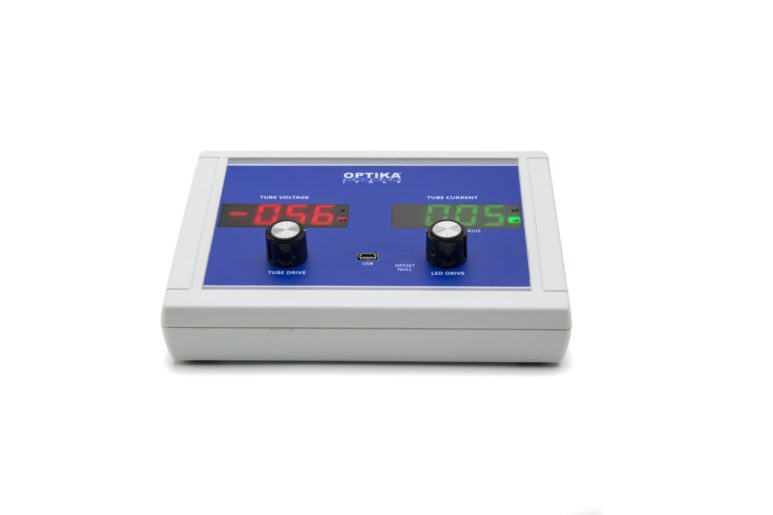• How to use it
• Historical notes on the nature of light
• Electromagnetic waves
• Intensity of electromagnetic waves
• Photoelectric effect
• Photoelectric cell
• Work function
• Threshold frequency
• Characteristic graphic of a photocell
• Stopping potential
• Kinetic energy of electrons doesn’t depend on
radiation intensity
• The number of emitted electrons depends on
radiation intensity
• Summary
• Einstein quantum theory
• How Einstein quantum theory explains events
• How to value threshold frequency
• How to measure Planck constant
3 LEDs (green, red and blue)
1 Base with phototube
1 Unit control
1 Power supply 24 V DC
Technical data
Power supply: 24V DC
Voltmeter 4 digits, sensibility: <2mV
Ammeter 4 digits, sensibility < 5nA
Button to cut off current
LED light adjustment 0-100%
Anodic tension adjustment

